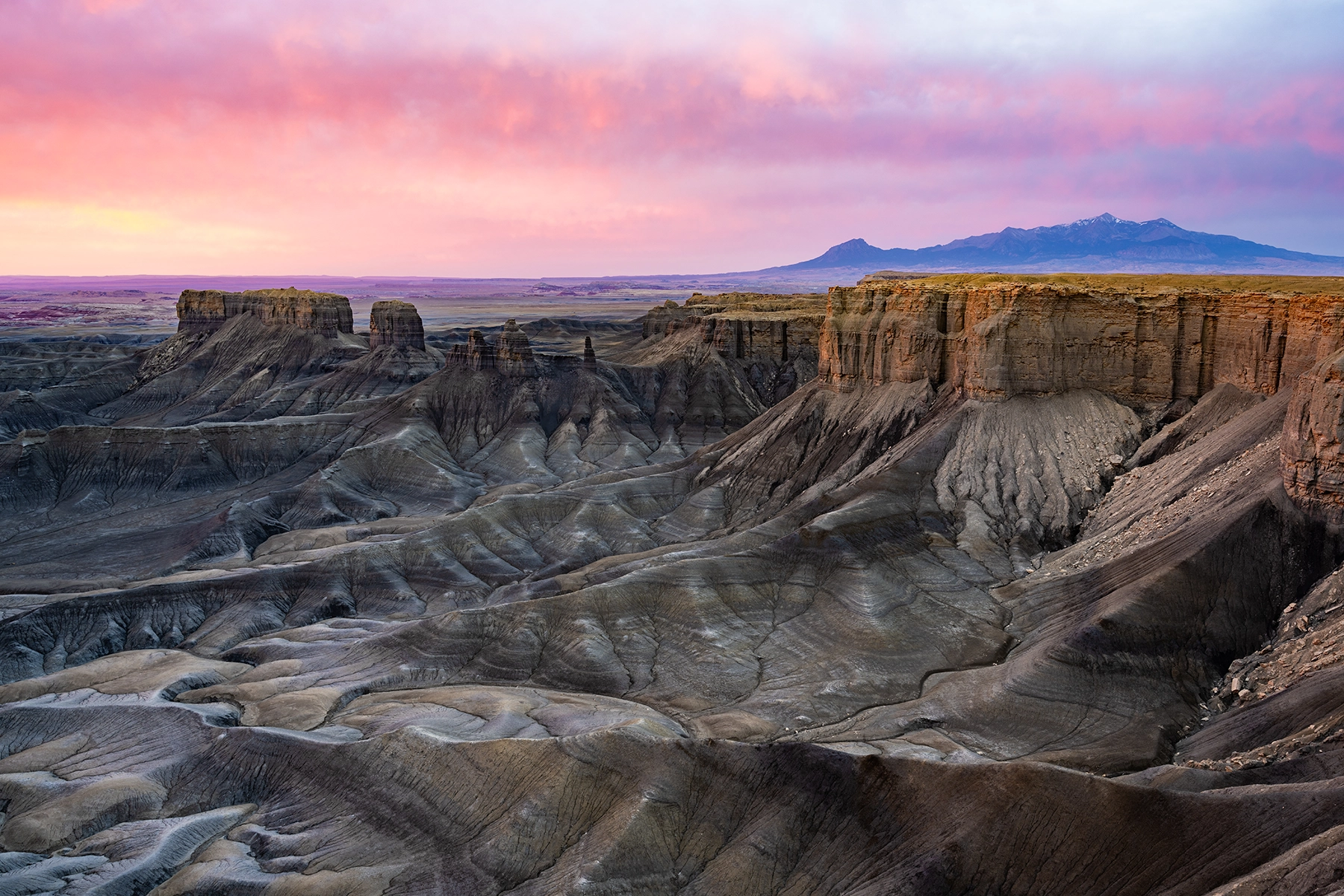
Utah Unveiled
Dino Sokocevic’s Tamron 28-75mm G2 and 50-400mm VC lenses help him capture stunning landscape photos in the Southwest wildnerness.
Author: Jenn Gidman
Images: Dino Sokocevic
Share Article
Dino Sokocevic’s Tamron 28-75mm G2 and 50-400mm VC lenses help him capture stunning landscape photos in the Southwest wildnerness.
Dino Sokocevic has steadily built a reputation for his street photography in the US and abroad, as well as his evocative nature and landscape photography across the American West and Southwest, capturing the region’s vast, rugged beauty with an eye for detail. The Utah photographer’s latest adventures included exploring the area around Hanksville, near his home state’s Capitol Reef National Park, as well as expeditions south of Moab, near Monument Valley.
Accompanying him on his recent spring treks were his Tamron 28-75mm F2.8 Di III VXD G2 standard zoom and 50-400mm Di III VC VXD ultra-telephoto zoom. “The 28-75mm, with its sharp optics and F2.8 low-light capabilities, has long been my go-to lens for landscape photography, especially during sunrises and sunsets, when the lighting can be harder to work with,” he says.
Complementing Dino’s 28-75mm F2.8 zoom is his newest acquisition, the 50-400mm VC ultra-telephoto zoom. “I fell in love with this lens pretty quickly,” he says. “It’s a very versatile lens in a relatively compact, lightweight package that features Tamron’s proprietary Vibration Compensation (VC) image stabilization technology, which pairs well with the in-body stabilization in my Nikon Z camera. Together, these two lenses cover a vast focal range—from ultra-wide to super-telephoto—that allows me to travel light but prepared while I’m exploring.”
Read on to see how Dino crafted each of the photos to follow with his Tamron lenses.
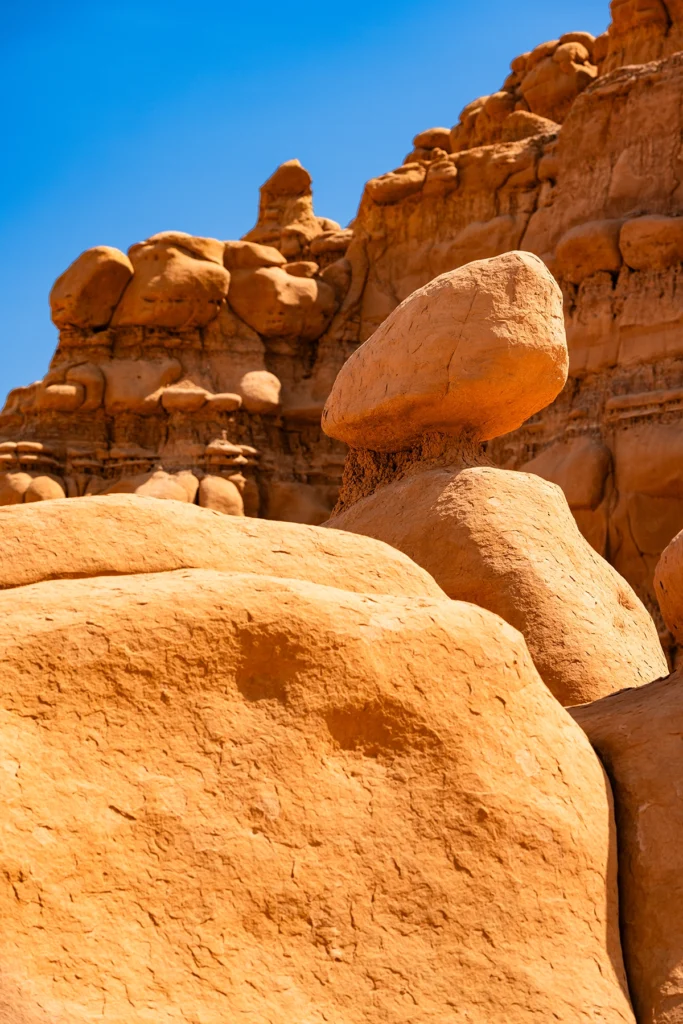
I used the 50-400mm VC lens to capture this photo of the hoodoo rocks in Goblin Valley, zooming in a bit to isolate a single rock formation as my main subject, much like a portrait. Even when you’re shooting the wide expanses of the park, a super-telephoto lens like this can be a powerful tool for selecting and highlighting unique natural features in the landscape. The composition here also shows the contrast between the warm tones of the rock and the clear blue sky.
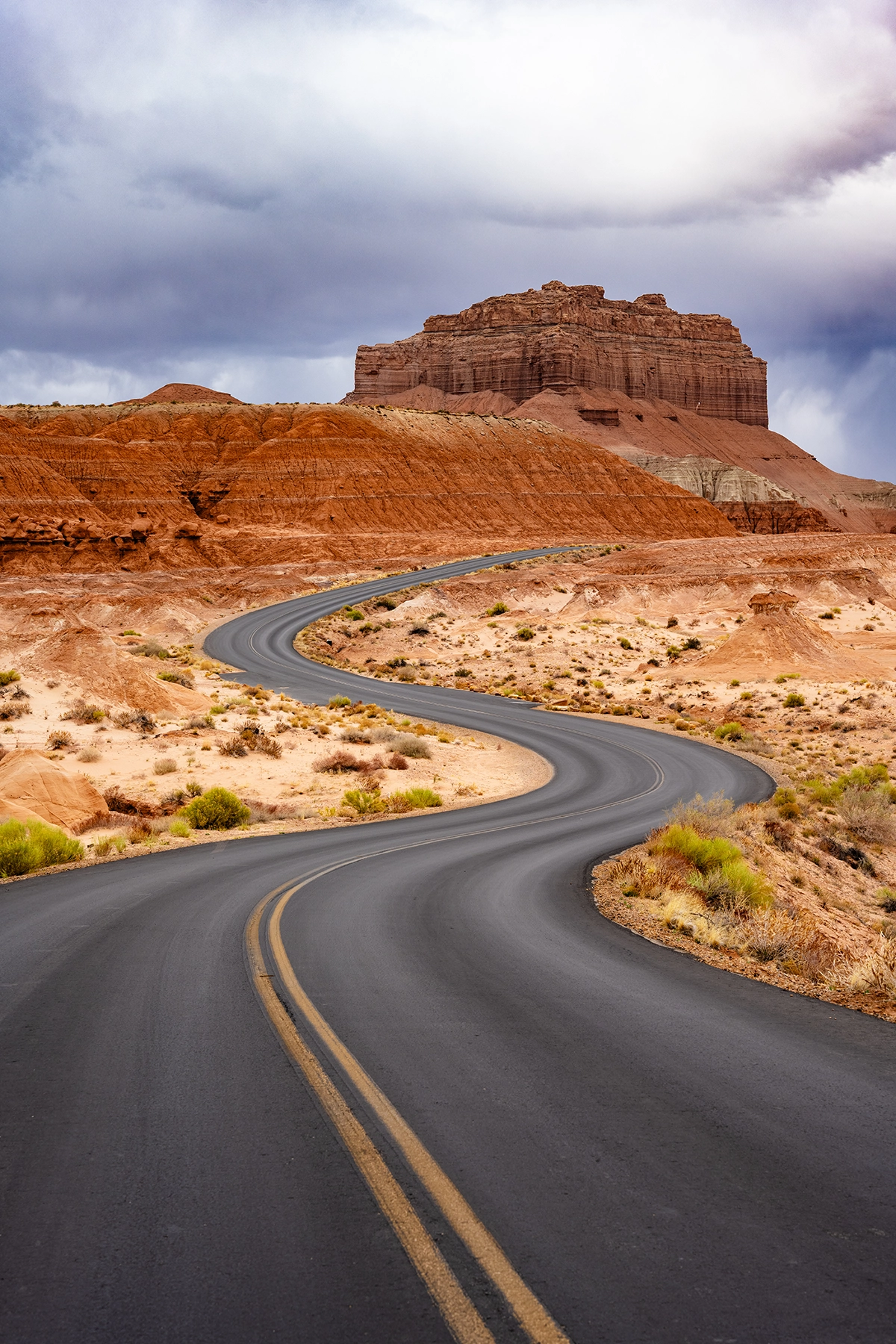
About 30 minutes after taking the photo of the hoodoos, I spotted this great S-curve highway in Goblin Valley. I love to shoot long, winding roads and landscapes—they offer the best natural leading lines and physically lead the viewer’s eye into the scene. The butte in the background here against that dramatic sky would’ve been a pretty picture on its own, but adding the highway makes it iconic. Your eyes dance around the image for a bit before finally settling on the horizon. I loved the road’s unique texture, too, caused by the natural wear of traffic.

In the region of Utah near Hanksville, there are a lot of cool spots sprinkled throughout a stretch of Bureau of Land Management land. This image was taken from a cliff with the La Sal Mountains in the background, and it’s one of the rare times when I used a tripod, as the sunrise lighting was more challenging to work with and I wanted to ensure a sharp photo. It’s a classic rule-of-thirds composition, with the horizon in the upper third to contrast with the textured desert landscape in the foreground, using the distant mountains to complete the scene.
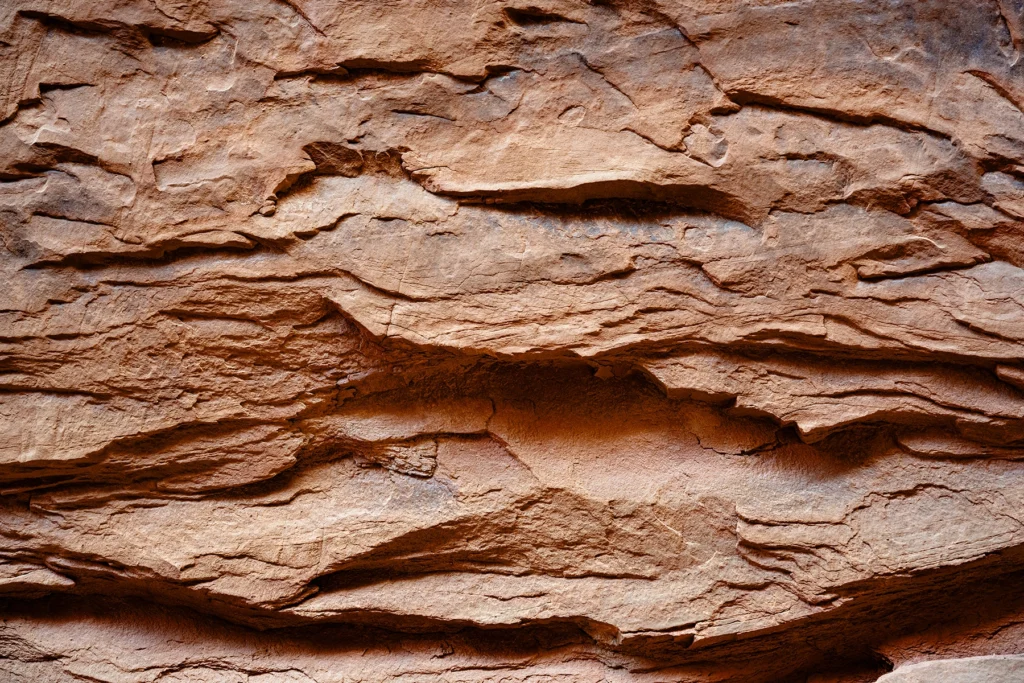
It’s easy when you’re confronted with the sweeping landscapes of the American Southwest to focus on the bigger picture and lose sight of the details. That’s where a lens like the 28-75mm F2.8 can take your photos to the next level. This image of the rock striations was somewhat accidental, in that I just happened to notice the interesting texture when I zoomed in to 75mm and got close up to this section of rock in a local slot canyon.
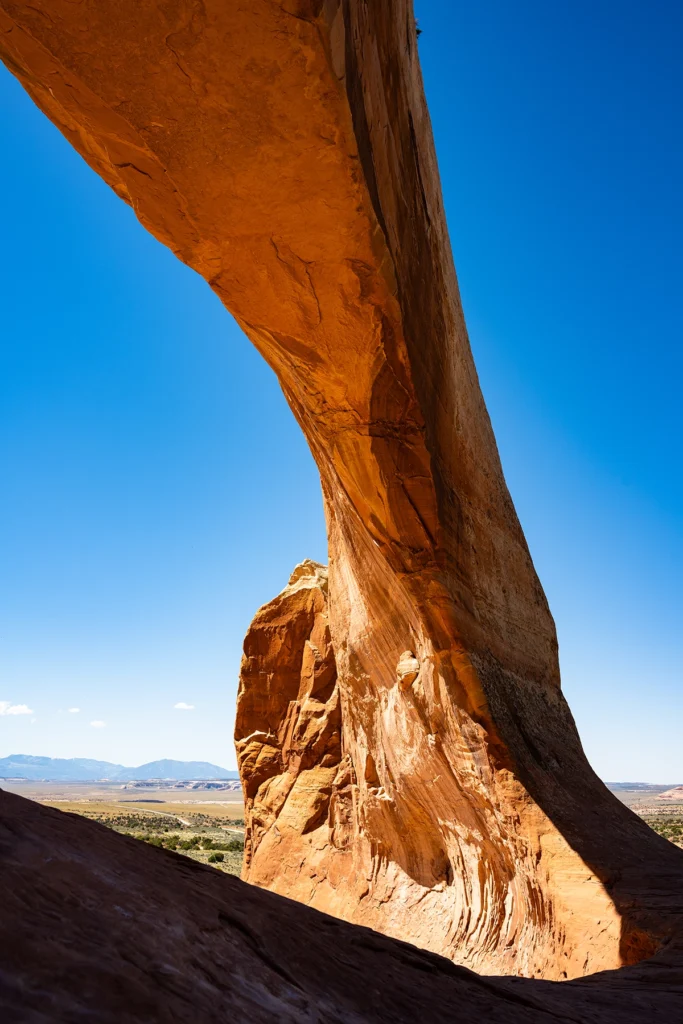
While heading south toward Moab, I captured this natural arch. I wanted to incorporate the natural curves of the arch into the image, but I didn’t want to go too superwide and create any distortion, so I opted for the 28-75mm F2.8 to take the shot. By framing it this way, I emphasized the arch’s form while also leaving a little bit to the imagination on what’s beyond the frame. I was working with harsher midday light, so I was able to play around with some shadows as well to create some contrast.
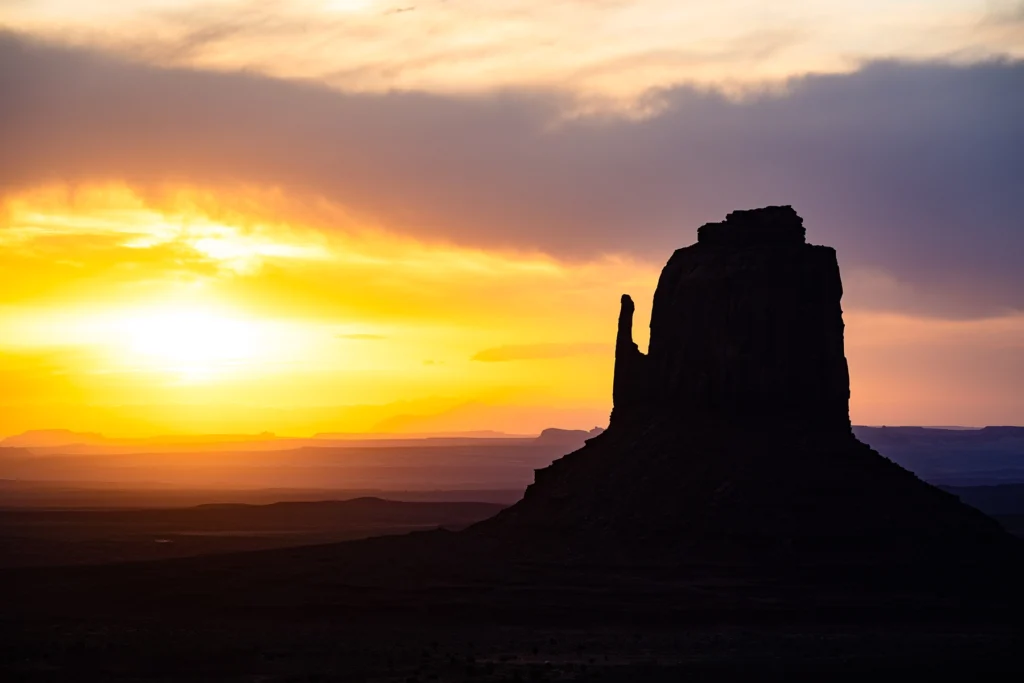
I created this photo of a silhouetted rock formation—one of the iconic “Mittens,” buttes located in Utah’s Monument Valley Navajo Tribal Park—during sunrise from the porch of the View Hotel where I was staying, which is very aptly named. Instead of trying to capture the formation fully lit, I intentionally chose to underexpose it, turning the butte into a mysterious silhouette against the cloudy morning sky. This emphasized the contrast between the shadowed rock and the sunrise, while also revealing those subtle textures and bumpy silhouetted outline of the rock formation that might otherwise have been overlooked.
To see more of Dino Sokocevic’s work, check out his Instagram.


